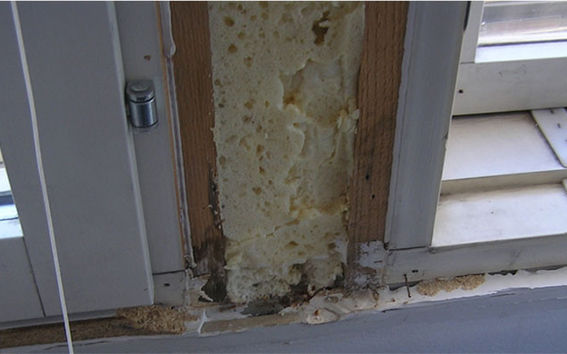Group effort to combat mould damage

Aalto University now has a new professorship in Indoor Environment Technology. The field of research is wide and multidisciplinary.
Assistant Professor in Indoor Environment Technology Heidi Salonen believes that a solution to indoor air quality problems can be achieved via multidisciplinary and broad-scoped cooperation.
‘I am eager to start in my new position, and take on the new challenges that it will bring with it,’ Ms Salonen says.
Problems related to indoor environments have increased dramatically during the past twenty years. Hundreds of thousands of people are exposed to health hazards caused by poor indoor air quality on a daily basis.
According to a report on damp and mould damage (Reijula et al.) published in 2012 by Finland’s Parliamentary Audit Committee, damp and mould damage can be considered significant if its prevalence is 7–10 per cent of the gross floor area in small single family homes and terraced homes and 6–9 per cent in apartment buildings. Repair work costs over a billion euros each year.
In addition to damp and mould damage, for example man-made vitreous fibres (MMVF) from thermal and acoustic insulation products, and chemicals released from construction materials may cause problems.
There is no shortage of work to be done in this research area.
Ms Salonen speaks about indoor air quality and how many different factors impact upon it.
'In order to solve these problems, we must combine multi-professional and multidisciplinary expertise. Research projects must be planned in a way that ensures that specialists and experts from as many areas as possible are involved. A command of just one area is not sufficient.’
Experts in the areas of building physics, microbiology, chemistry, architecture, medical science, HPAC technology, particle physics and psychology are all needed in the scope of indoor environment research and problem solving. Companies participate in finding solutions to problems as product developers and implementers of practical solutions.
If the source of indoor air quality problems can be located, the procedures can be implemented to eliminate it. However, the cause of symptoms cannot always be identified, or we do not know of a way to measure it.
‘It is known that exposures to microbes indoors implicate in various health effects such as airway disorders and upper respiratory track symptomsHowever the knownledge of what the agents, the amount of exposure, and the mechanisms in damp indoor environments contribute to health effects is incomplete. ‘The field of building physics plays a significant role in solving problems and preventing them. However, technology alone is not enough. In order for people to be able to design and build the correct type of technology, it is important to understand the factors that impact indoor air quality and the methods for improving it,’ Ms Salonen explains.
Multi-faceted work
Indoor air quality is Ms Salonen’s strongest area of expertise. In 2009, she received her Ph.D. from the University of Kuopio. Ms Salonen’s dissertation examined indoor air contaminants in office buildings.
Ms Salonen believes that she will fare well with people with an engineering background at Aalto University. She already has two and a half years of experience in working with engineers at The Queensland University of Technology in Australia, after completing her dissertation.
‘I was the only person in our group with an education in a non-technological field. Our cooperation was seamless and continues even today,’ Ms Salonen says.
Ms Salonen is currently a Senior Research Scientist and Project Manager for the Finnish Institute of Occupational Health’s (FIOH) Developing Indoor Environment Team, where she has been since 1998.
Ms Salonen has worked with companies in the role of an expert in so-called indoor air groups. The Finnish Institute of Occupational Health recommends that companies and organisations appoint an indoor airgroup, if indoor air quality problems arise in the workplace.
Last summer, Ms Salonen was invited to become a member of the Finnish Society of Indoor Air Quality and Climate’s board. She will continue in this position even after starting in her new position at Aalto University. She will also continue to work as a member of the Building Information Foundation’s (RTS) PT17 principle committee on indoor air quality.
Ms Salonen will step into her new position as Professor in Indoor Environment Technology in January 2015.
Contact information:
[email protected] – [email protected] ( as of 1 January 2015 )
Read more news

Get to know us: Associate Professor Maria Sammalkorpi
Sammalkorpi received her doctorate from Helsinki University of Technology 2004. After her defence, she has worked as a researcher at the Universities of Princeton, Yale and Aalto.
Aalto computer scientists in ICML 2024
Computer scientists in ICML 2024
Getting bacteria into line
Physicists use magnetic fields to manipulate bacterial behaviour